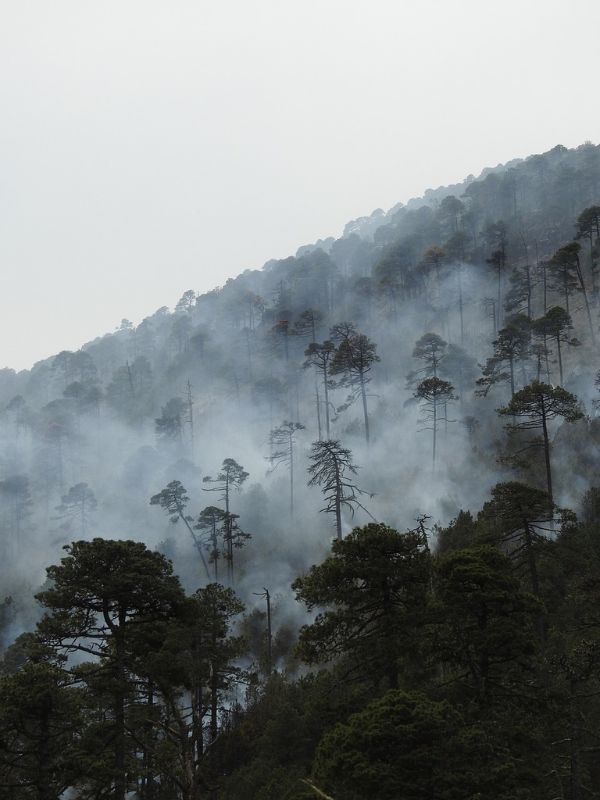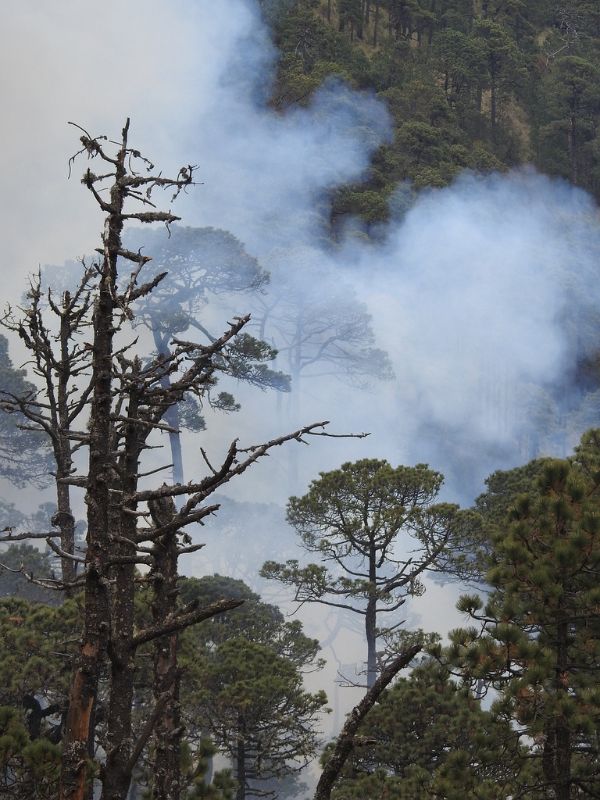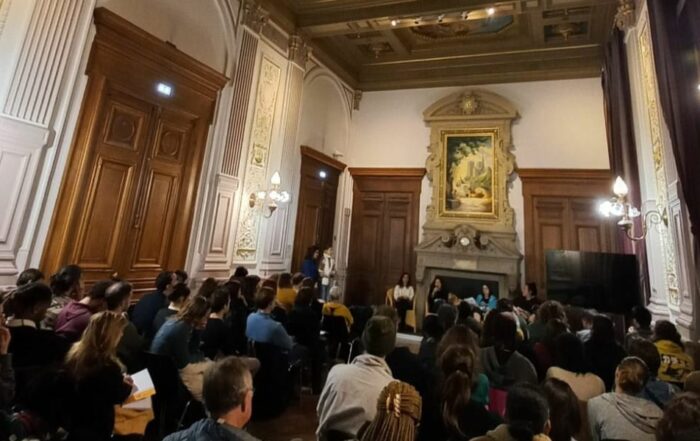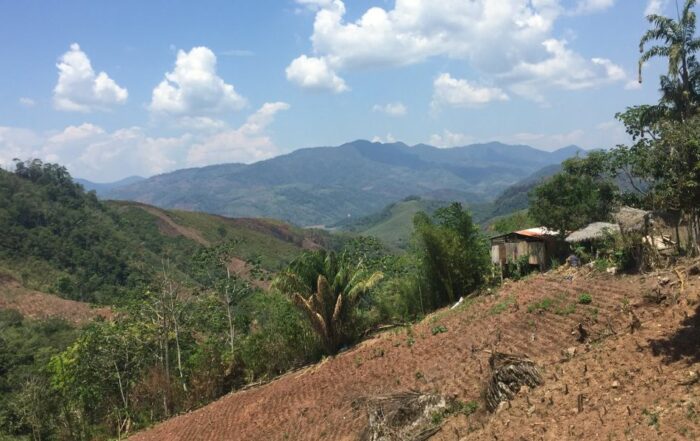In the peruvian part of Amazon, burning crops is a widely spread habit that continues to be used repeatedly, mostly during the periods of seedings or harvest. Farmers have been used to burning crops to “clean” the land and to prepare it for the next sowing. Even though this technique might be useful and more economical, its consequences for the environment and human health are tragic.
This technique generates huge quantities of greenhouse gas contributing to global warming and of other gases pollute the air we all breathe. This practice can also lead to the loss of nutrients in the soil and a noticeable decrease in biodiversity.
The peruvian laws to prevent burning of the crops
In Peru, it is the duty of the State to determine national environmental policy, promote the sustainable use of natural resources, and ensure the sustainable development of the Amazon through appropriate legislation, according to Articles 67 and 69 of the Constitution. In this regard, the use of fire is a practice regulated and limited by several laws and regulations for the protection of forests. At the criminal level, Article 310 of the Penal Code, which addresses offenses against forests and wooded areas, punishes “anyone who, without the required permit, license, authorization, or concession granted by the competent authority, destroys, burns, damages, or cuts, in whole or in part, forests or other wooded areas, whether natural or planted”, with a prison sentence of four to six years and community service for several days. Additionally, an administrative fine of 5000 UIT is provided by the Regulation on Offenses and Sanctions in Forestry and Wildlife Matters (approved by Supreme Decree No. 007-2021-MIDAGRI) for anyone who “causes damage to the resources that constitute the forest and wildlife heritage of the nation by using fire.” Moreover, it is strictly prohibited to burn crop residues and harvest remains on any land, whether forested or not, according to Article 27 of the Solid Waste Management Regulation (approved by Supreme Decree No. 016-2012-AG). It can therefore be concluded that agricultural burning is prohibited in Peru, except in the case of a special authorization granted by the competent authorities.
However, numerous illegal agricultural burns occur every year before the rainy season and sometimes turn into wildfires with extreme consequences for living beings. The lack of resources for authorities to carry out inspections, along with the inaccessibility of some remote areas far from road networks, facilitates impunity and the persistence of this practice over time. To limit this risk, the government has initiated several programs to offer farmers alternatives to burning.
What are the means to fight against crop burning?
Controlling crop burning in Peru is a complex challenge that requires the cooperation and commitment of many actors, including farmers, government authorities, NGOs, private companies and society in general. However, several strategies can help address this issue:
What would be the consequences of maintaining crop burning practices?
If we continue burning crops in Peru without proper control, it could negatively affect the environment, damaging the soil, reducing biodiversity and contributing to climate change. Additionnaly, it could increase the risk of wildfires which could destroy lives, homes and have long-lasting effects on the fauna and flora of ecosystems. Crop burning can also decrease agricultural productivity and threaten food security. For these reasons, it is important to adopt sustainable agricultural practices to protect the environment and the people living in these areas.


Actions taken by Envol Vert against crop burning
Envol Vert Peru promotes sustainable agricultural practices and take action to limit crop burning by creating agroforestry systems and training farmers in regenerative agriculture and soil management techniques. We work together with communities and authorities to raise awareness of the negative impacts of burning and support sustainable economic alternatives. We also provide technical assistance to improve crop productivity and profitability without harming the environment.
Concretely, we have organized a fun and educational activity aimed at raising farmers’ awareness of the risks and damage caused by crop burning. In this activity, participants took part in a small play in which the story of a farmer about to burn his crops was performed. During the play, the farmer’s neighbor shares his personal experience of the dangers of this practice, including soil degradation, loss of biodiversity and greenhouse gas emissions. The play later introduces other characters, such as local authorities or representatives from organizations promoting sustainable agricultural techniques and alternatives to crop burning.
Conclusion
Although crop burning is prohibited by the current law, this is not always respected due to the lack of resources within the institutions responsible for monitoring and sanctioning this practice. Furthermore, the institutions in charge of supervision are numerous, which leads to difficulties in coordination. Another important issue is the lack of economic alternatives for farmers, who are often unaware of the environmental and health risks associated with crop burning. It is important to work together to find solutions that help farmers adopt more sustainable farming practices, limiting or eliminating crop burning.
In the peruvian part of Amazon, burning crops is a widely spread habit that continues to be used repeatedly, mostly during the periods of seedings or harvest. Farmers have been used to burning crops to “clean” the land and to prepare it for the next sowing. Even though this technique might be useful and more economical, its consequences for the environment and human health are tragic.
This technique generates huge quantities of greenhouse gas contributing to global warming and of other gases pollute the air we all breathe. This practice can also lead to the loss of nutrients in the soil and a noticeable decrease in biodiversity.
The peruvian laws to prevent burning of the crops
In Peru, it is the duty of the State to determine national environmental policy, promote the sustainable use of natural resources, and ensure the sustainable development of the Amazon through appropriate legislation, according to Articles 67 and 69 of the Constitution. In this regard, the use of fire is a practice regulated and limited by several laws and regulations for the protection of forests. At the criminal level, Article 310 of the Penal Code, which addresses offenses against forests and wooded areas, punishes “anyone who, without the required permit, license, authorization, or concession granted by the competent authority, destroys, burns, damages, or cuts, in whole or in part, forests or other wooded areas, whether natural or planted”, with a prison sentence of four to six years and community service for several days. Additionally, an administrative fine of 5000 UIT is provided by the Regulation on Offenses and Sanctions in Forestry and Wildlife Matters (approved by Supreme Decree No. 007-2021-MIDAGRI) for anyone who “causes damage to the resources that constitute the forest and wildlife heritage of the nation by using fire.” Moreover, it is strictly prohibited to burn crop residues and harvest remains on any land, whether forested or not, according to Article 27 of the Solid Waste Management Regulation (approved by Supreme Decree No. 016-2012-AG). It can therefore be concluded that agricultural burning is prohibited in Peru, except in the case of a special authorization granted by the competent authorities.
However, numerous illegal agricultural burns occur every year before the rainy season and sometimes turn into wildfires with extreme consequences for living beings. The lack of resources for authorities to carry out inspections, along with the inaccessibility of some remote areas far from road networks, facilitates impunity and the persistence of this practice over time. To limit this risk, the government has initiated several programs to offer farmers alternatives to burning.
What are the means to fight against crop burning?
Controlling crop burning in Peru is a complex challenge that requires the cooperation and commitment of many actors, including farmers, government authorities, NGOs, private companies and society in general. However, several strategies can help address this issue:
What would be the consequences of maintaining crop burning practices?
If we continue burning crops in Peru without proper control, it could negatively affect the environment, damaging the soil, reducing biodiversity and contributing to climate change. Additionnaly, it could increase the risk of wildfires which could destroy lives, homes and have long-lasting effects on the fauna and flora of ecosystems. Crop burning can also decrease agricultural productivity and threaten food security. For these reasons, it is important to adopt sustainable agricultural practices to protect the environment and the people living in these areas.


Actions taken by Envol Vert against crop burning
Envol Vert Peru promotes sustainable agricultural practices and take action to limit crop burning by creating agroforestry systems and training farmers in regenerative agriculture and soil management techniques. We work together with communities and authorities to raise awareness of the negative impacts of burning and support sustainable economic alternatives. We also provide technical assistance to improve crop productivity and profitability without harming the environment.
Concretely, we have organized a fun and educational activity aimed at raising farmers’ awareness of the risks and damage caused by crop burning. In this activity, participants took part in a small play in which the story of a farmer about to burn his crops was performed. During the play, the farmer’s neighbor shares his personal experience of the dangers of this practice, including soil degradation, loss of biodiversity and greenhouse gas emissions. The play later introduces other characters, such as local authorities or representatives from organizations promoting sustainable agricultural techniques and alternatives to crop burning.
Conclusion
Although crop burning is prohibited by the current law, this is not always respected due to the lack of resources within the institutions responsible for monitoring and sanctioning this practice. Furthermore, the institutions in charge of supervision are numerous, which leads to difficulties in coordination. Another important issue is the lack of economic alternatives for farmers, who are often unaware of the environmental and health risks associated with crop burning. It is important to work together to find solutions that help farmers adopt more sustainable farming practices, limiting or eliminating crop burning.






